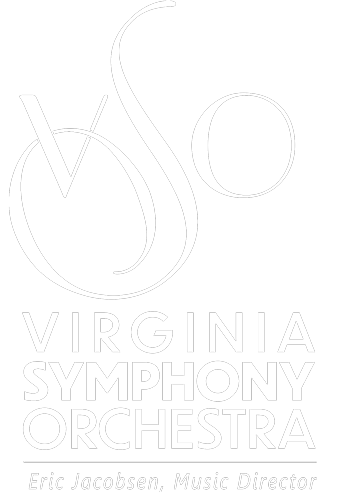What about the music?
An inside look with the Virginia Symphony Orchestra
Rachmaninoff’s Second Symphony
Friday, November 1, 2024 7:30PM | Chrysler Hall
Saturday, November 2, 2024 7:30PM | Ferguson Center
Sunday, November 3, 2024 2:30PM | Sandler Center
Maurice Ravel: Le Tombeau de Couperin
Franz Liszt: Piano Concerto No. 1
Sergei Rachmaninoff: Symphony No. 2
By Stella Feliberti
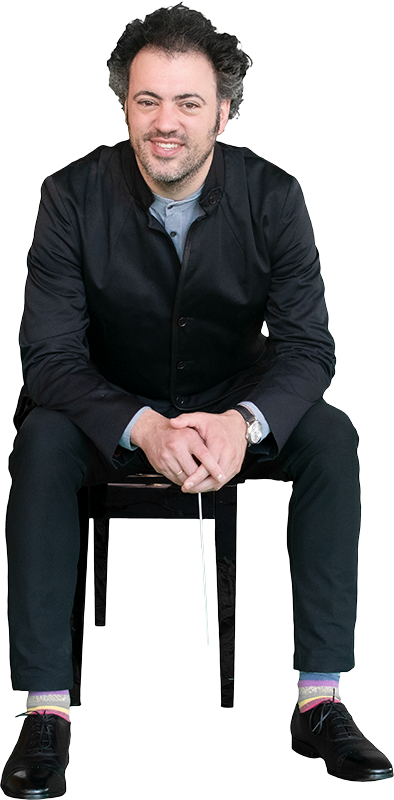
The Performers
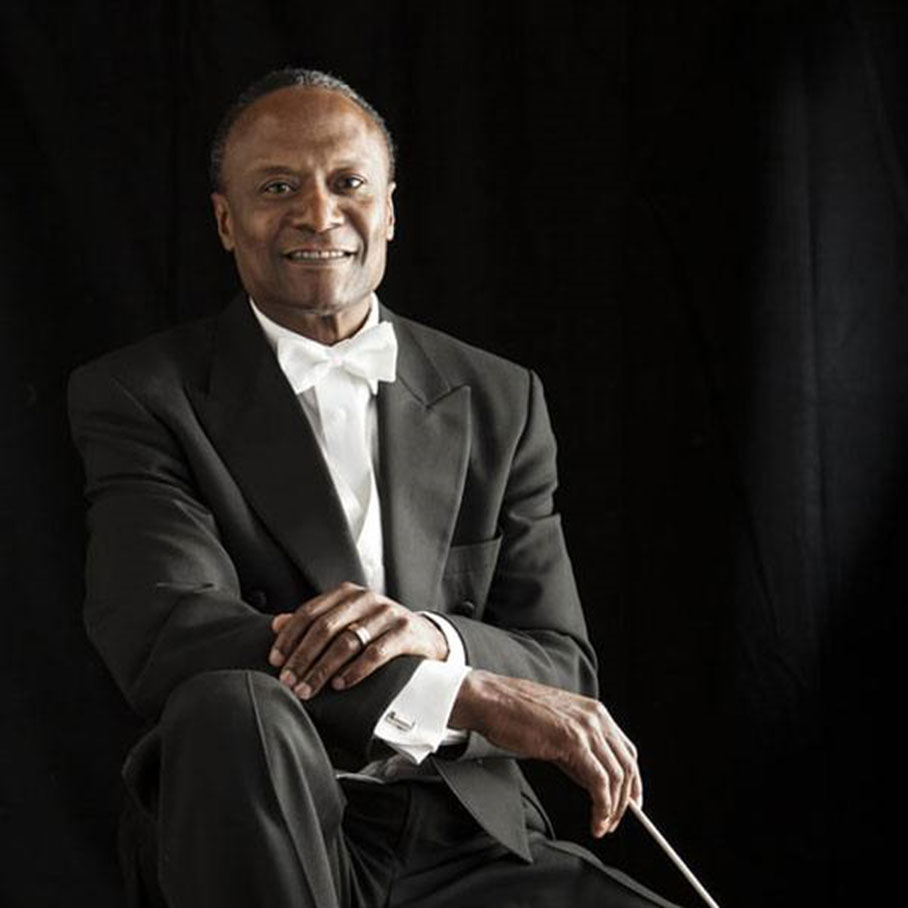
Conductor
Thomas Wilkins
Thomas Wilkins is currently principal conductor of the Hollywood Bowl in Los Angeles, Artistic Advisor for Education and Community Engagement at the Boston Symphony Orchestra, and he holds the Henry A. Upper Chair of Orchestral Conducting at Indiana University. He recently stepped down after 17 successful years leading the Omaha Symphony and his guest conducting credits include every major American orchestra.
Devoted to promoting a life-long enthusiasm for music, Mr. Wilkins brings energy and commitment to audiences of all ages. He is hailed as a master at communicating and connecting with audiences. Following his highly successful first season with the Boston Symphony, the Boston Globe named him among the “Best People and Ideas of 2011.” In 2014, Mr. Wilkins received the prestigious “Outstanding Artist” award at the Nebraska Governor’s Arts Awards, for his significant contribution to music in the state while in 2018 Thomas Wilkins received the Leonard Bernstein Lifetime Achievement Award for the Elevation of Music in Society conferred by Boston’s Longy School of Music.
Mr. Wilkins is a graduate of the Shenandoah Conservatory of Music and the New England Conservatory of Music in Boston. He and his wife Sheri-Lee are the proud parents of twin daughters, Erica and Nicole.
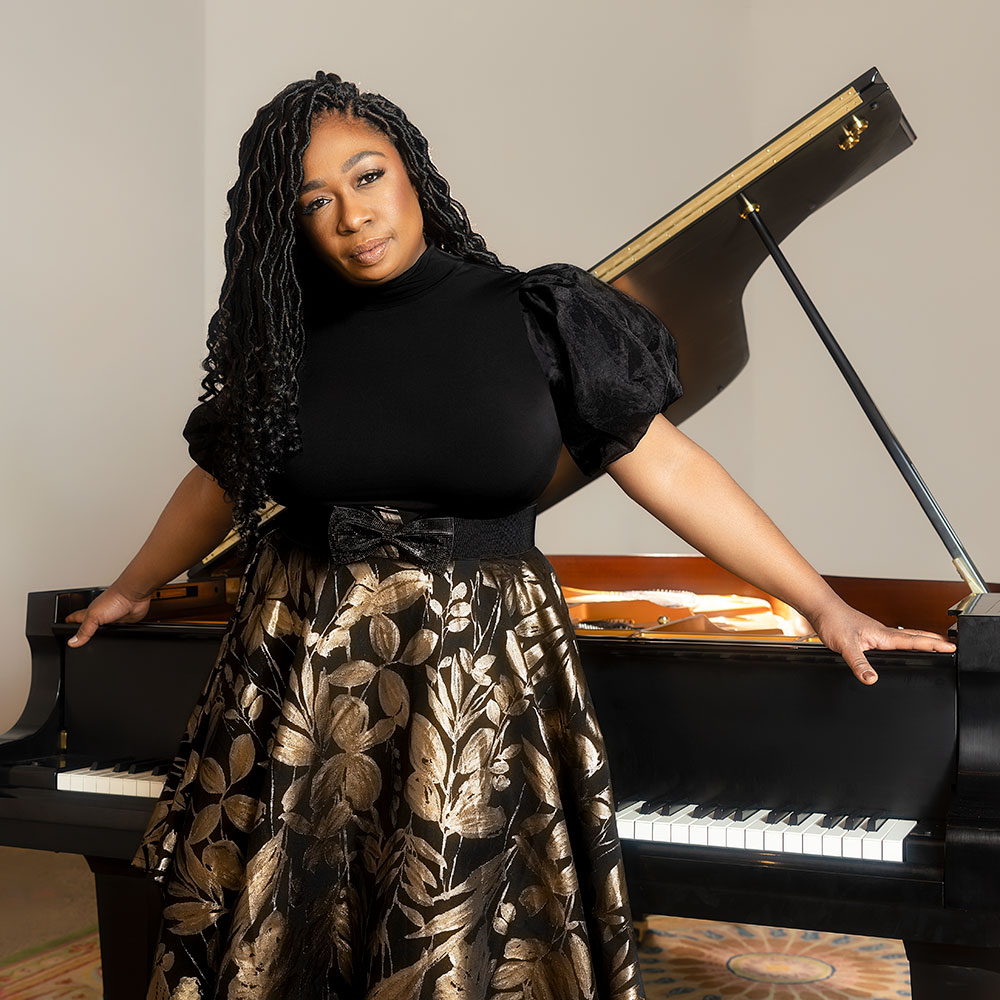
Piano
Michelle Cann
Lauded as “exquisite” by The Philadelphia Inquirer and “a pianist of sterling artistry” by Gramophone, Michelle Cann has become one of the most sought-after pianists of her generation. She made her debut in 2021 with The Philadelphia Orchestra and has recently performed concertos with The Cleveland Orchestra, the National Symphony Orchestra, the Orquestra Sinfônica Municipalde São Paulo, the Los Angeles Philharmonic, and the symphony orchestras of Atlanta, Baltimore, and Cincinnati. Highlights of Cann’s 2023-24 season included appearances with the Charlotte, Hawaii, Indianapolis, Québec, Sarasota, and Winnipeg symphony orchestras, and recitals in New York City, Portland, Berkeley, Beverly Hills, and Denver.
Recognized as a leading interpreter of the piano music of Florence Price, Cann performed the New York City premiere of Price’s Piano Concerto in One Movement with The Dream Unfinished Orchestra in July 2016. Her recording of the concerto with the New York Youth Symphony won a Grammy Award in 2023. Her acclaimed debut solo album Revival, featuring music by Price and Margaret Bonds, was released in May 2023.
Cann was the recipient of the 2022 Sphinx Medal of Excellence, the highest honor bestowed by the Sphinx Organization. She holds bachelor’s and master’s degrees in piano performance from the Cleveland Institute of Music and an Artist’s Diploma from the Curtis Institute of Music. Cann joined the Curtis piano faculty in 2020 as the inaugural Eleanor Sokoloff Chair in Piano Studies, and she joined the piano faculty of the Manhattan School of Music in 2023.
The Creators
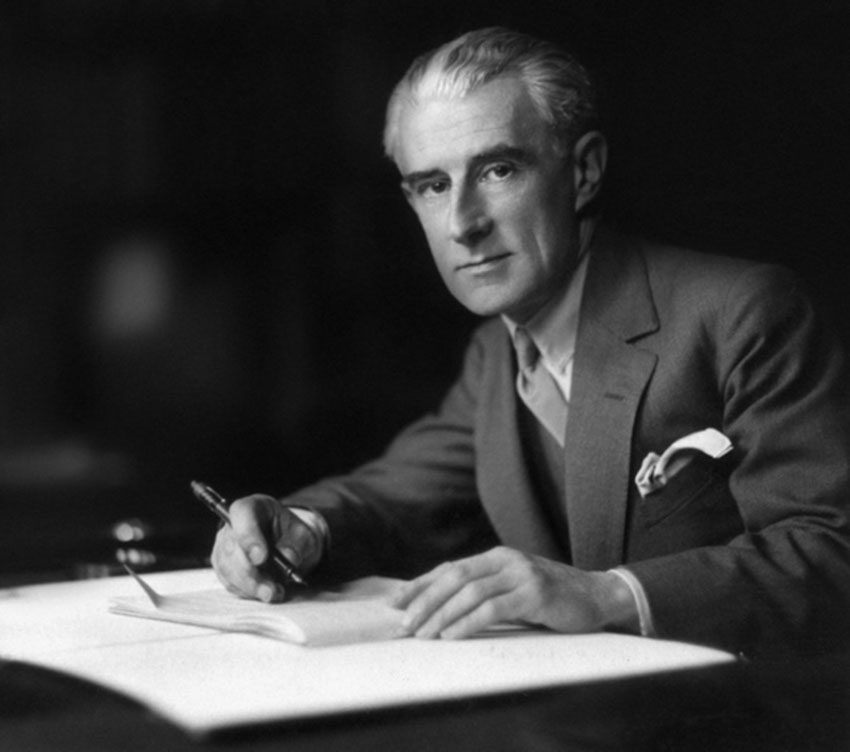
Maurice Ravel
Pronounced moh-REES rah-VEHL
Fast Facts:
- Maurice Ravel was born in 1875 in the Basque region of France. He started music lessons at 6 and gave his first public recital at 14. He claims that as a child he was extremely sensitive to music, “every kind of music.”
- He studied composition under another famous French impressionist composer, Gabriel Fauré.
- Ravel was very opinionated when it came to other composers and their music. He is said to describe Beethoven as “exasperating,” Wagner’s influence as “pernicious,” and Berlioz’s harmony as “clumsy.”
- In 1928 Ravel toured the US where he was exposed to jazz artists such as George Gershwin. After this, Ravel began to include more jazz elements into his later compositions, especially his piano concerti.
- Ravel was an extreme perfectionist when it came to his compositions. He would often get inspiration from his walks alone in the French countryside or Paris. Then, he would write down his new ideas and work on the composition until it was complete. He would not let anyone see the work until he deemed it ready.
- Ravel included a wide variety of music and sounds into his works. His inspiration ranged from Baroque music forms to gamelan (a Balinese percussion instrument) music, to Spanish music and ancient modes.
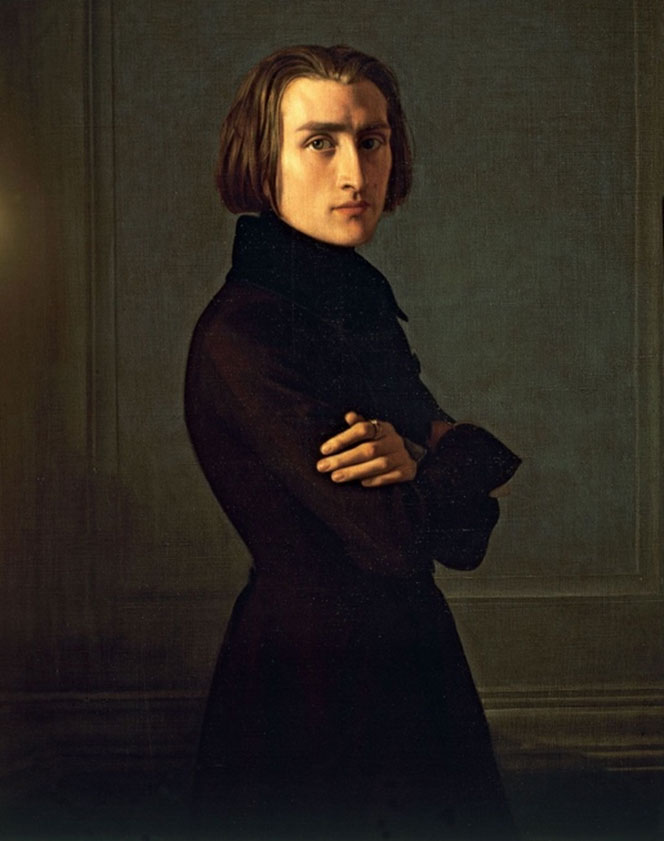
Franz Liszt
Pronounced frahnz LIST
Fast Facts:
- Franz Liszt was born in 1811 in Hungary. He started lessons at age 5 with his father and started to compose by age 8.
- Liszt is considered one of the world’s first “rockstars” due to his incredible fame and touring throughout his life. Between 1838 and 1848, he performed over 1000 concerts, showcasing his palpable flair in his playing and distinct hairstyle.
- Liszt pulled lots of inspiration from Hungarian folk songs and the improvisatory style of the Romani people. He even wrote a treatise on the musical traditions of the Romani people, which is some of the earliest forms of ethnomusicological study.
- Liszt was a firm believer in using his musical talents and wealth to serve larger purposes. He was a huge proponent for social justice, supporting women’s autonomy and redistribution of wealth. He would often donate his earnings to charity or even give free masterclasses to the next generation of pianists.
- As an innovative composer, Liszt created a new form of music: the symphonic poem. This new form is a single piece for orchestra that pulls inspiration directly from something outside of music, usually a poem, painting, historical story, or mythology.
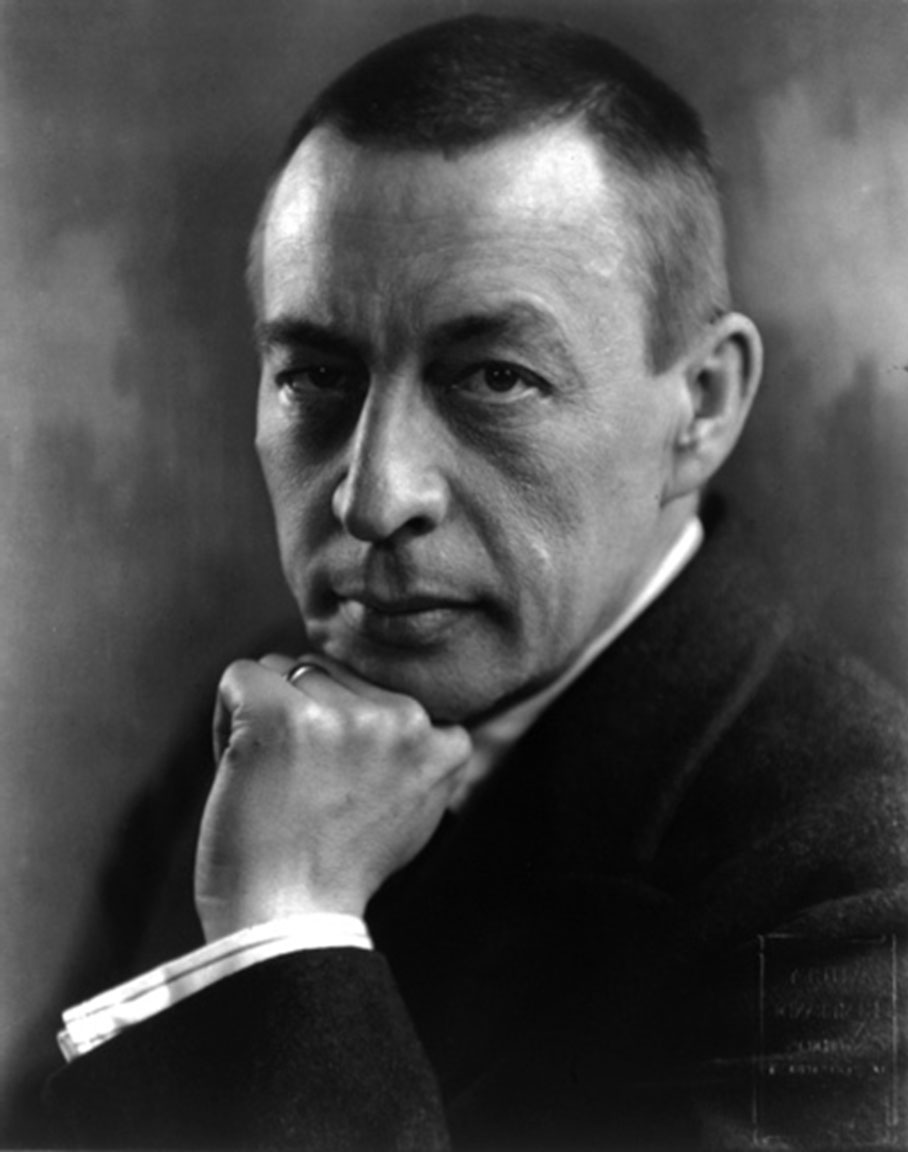
Sergei Rachmaninoff
Pronounced SEHR-gay raak-MAH-nuh-naaf
Fast Facts:
- Sergei Rachmaninoff was born in 1873 in Russia. His musical gifts as a pianist and composer were evident from a young age as he composed his 1st Piano Concerto only at age 18.
- Rachmaninoff’s Piano Concerto No.2 is considered as one of the nation’s favorite classical works at the time and is considered as one of the greatest piano concertos ever written. It was even used in the film Brief Encounters.
- In addition to being a talented composer, Rachmaninoff was also a talented conductors and magnificent pianist. He held many prestigious positions including Principal Conductor of the Bolshoi Theater and offered a job as the conductor of the Boston Symphony Orchestra twice!
- Many of Rachmaninoff’s pieces include large reaches for pianists as he could reach 12 keys form the tip of his pinky to the tip of his thumb, which is about the interval of a 13th.
- In addition to being passionate about music and piano, Rachmaninoff enjoyed cars and speedboating. He was known as a virtuoso driver. He even had his own theory about the benefits of driving: “A good conductor must naturally be a good driver. Both the motorist and the conductor need a will of iron, focused attention, and constant presence of mind. To these qualities the conductor only needs to add some knowledge of music.”
Maurice Ravel
Le Tombeau de Couperin
Listen to Ravel’s Le Tombeau de Couperin by the Frankfurt Radio Symphony:
As the turn of century introduced exceptional change throughout the world, Ravel was open to the variety of new sounds that the early 20th century provided, which he included in his work, Le Tombeau de Couperin. This piece was written in 1917 originally for piano but orchestrated by Ravel himself in 1919. Ravel wrote this piece about the friends of Baroque composer Francois Couperin (1668-1733) through six movements that are based on a traditional Baroque suite. While the piece is an homage to Couperin, Ravel describes this piece as “directed less in fact to Couperin himself than to French music of the 18th century.” Throughout this piece, Ravel intertwines rhythmic, melodic forms, and cadences of Couperin’s time as well as his own harmonies, creating a luscious dialogue between the three. This piece is a great example of composers blending past and new styles of music to produce a vivid and colorful piece, like Le Tombeau de Couperin.
This piece first opens with a lively Prelude, emulating the harpsichord music of Couperin or Scarlatti. However, instead of using traditional harmonies of the 18th century that Ravel pulls this form from, he employs the harmonies of his time. With this shift to a more modern harmonic structure, Ravel’s Prelude is full of scurrying ornamental lines that flourish with each iteration. Next is a Forlane, which is an Italian folk dance. This dance, unlike the opening movement, portrays dancers skipping across the dancefloor in a graceful yet rustic manner. The Menuet that follows is sweeter as it introduces a more pastoral quality to the piece. Finally, the piece closes with a Rigaudon—a lively French folkdance. This final movement starts with a jovial and vivacious dance, interrupted by a sweeter, lilting moment in the middle; yet, the Rigaudon returns to its original vivacity to close the piece.
Franz Liszt
Piano Concerto No. 1
Listen to Liszt’s Piano Concerto No.1 by Yuja Wang and the Oslo Philharmonic Orchestra:
Even though Liszt completed several revisions of his 1st Piano Concerto, his final version stuns audiences because of its technical yet emotive demands of both the piano soloist and the orchestra. Liszt started to compose the work in 1830 when he first wrote the opening theme of the concerto. At the time, he reported that he had written the entire solo part of the concerto but the “accompaniment remains to be written.” Despite writing the solo part in full between 1830 and 1834, Liszt disregarded this edition as he wrote the accompaniment part. All that remains of this first edition is the imposing principal theme that is interwoven throughout the final version. It was not until 1855 that the final version was premiered; yet, even after that there was some altered details from the composer.
Throughout the entirety of this concerto, a single theme is interwoven seamlessly into the musical textures Liszt creates. The composer even eventually added words to this melody: Das versteht Ihr alle nicht, haha!” (None of you understand this, ha-ha!). Opening the concerto, is a thundering melody from strings (Das versteht Ihr alle nicht), to which the winds respond to (haha!). Interrupting this conversation comes the solo piano with daunting octaves that turn into short, yet impressive, cadenza. Next is an intoxicating cavatina (Italian little song) to whisk the audience into a daydream. Yet, the third movement brings back the seriousness and intensity that the first movement encompassed in both the orchestral accompaniment and soloist with the main theme coming back in full force. Finally, the last movement takes the main theme and presents it in an impish manner rather than its usual statement of glory. All throughout the piece, this opening theme is manipulated so effortlessly that it is often unnoticeable that it is the same theme from the opening.
Sergei Rachmaninoff
Symphony No. 2 in E minor
Listen of Rachmaninoff’s Symphony No.2 by the Oslo Philharmonic:
Despite an unsuccessful premiere of his 1st Symphony, Rachmaninoff gained major acclaim for his 2nd Symphony as it is extremely rich and melodious. The work was composed in Dresden between 1906 and 1907. At this point, Rachmaninoff was taking a brief retirement from concert activities. Prior to this composition, Rachmaninoff suffered from depression after the failure of his 1st Symphony’s premiere. Yet, by 1906, he had reobtained success thanks to his infamous Piano Concerto No.2. Thus, in this 2nd Symphony, Rachmaninoff aimed to compose it to express his feelings, ranging from somber and melancholic, to tender and romantic. Audience can feel the lush emotions Rachmaninoff wanted to portray throughout the entirety of the work, making it a touching and gorgeous piece to listen to.
Ominously, the symphony begins with only the double basses and cellos playing. This serious and dark melody is the essential motive of the symphony that dominates the entire symphony. A chorale of winds and the first violins then take the melody to open into a rich but grave color. Slowly, more of the orchestra joins the violins until the entire orchestra has opened into a yearning yet singing version of the central motive. However, this lyrical, grave melody shifts to a driving Allegro till the end of the movement. Using the same energy from the end of the first movement, the next movement starts restless and fiery with springing strings and rich brass, emulating a festive march. Yet, in the middle of this movement, Rachmaninoff includes a luxurious chorus that shifts back to the opening spriteliness. Unlike the 1st and 2nd movement, the third movement is a heartwarming and romantic character. This movement opens passionately with the strings, eventually fading into a more intimate sound as the solo clarinet enters. But as this intimate sound builds, the true height of passion is reached by the entire symphony singing gloriously. Finally, the last movement shatters the romance of the third movement with carnival-like atmosphere. Recollections of the earlier movements are intertwined to create a soaring melody once more. Gradually, the music falls into a bumbling recapitulation and coda to end the symphony in a brilliant manner.
